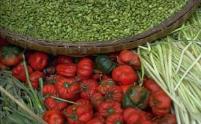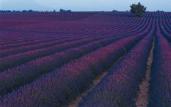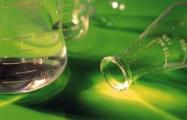| So, what about the fiber in the diet? This is a complex part of the diet in that fiber is needed for proper intestinal action, but an incorrect amount will interfere with proper digestion, and~or inhibit absorption of nutrients. This is where the value of pelleted diets really comes to the fore. Low residue diets, as seed-type diets, produce droppings that are dry and hard. Owners may want this type of droppings because they lack offensive odors, and are easy to clean. |

| Feeding Pet Birds and Related Factors |
| "Avi-Sci, Inc. Science Is In Our Name and Our Product" Avi-Sci, Inc. 2009-2012 © All rights Reserved. |
| Dr. D's diets are formulated to contain protein, amino acids, fat, carbohydrates, vitamins and minerals in a carefully balanced proportion that also considers how much fiber and calories are in the diet. I realize that most people feeding birds are not familiar with the balanced diet concept. Each mouthful of feed is to contain all of the nutrients that the bird requires. People were brought up to eat a variety of foods in order to have proper nutrition. However, I observed what some people eat, so just eating a variety of foods cannot guarantee proper nutrition. (You have no doubt heard about junk food). So, one must be selective about the variety of food. Thus, the word 'variety' is not a magic word to success for proper nutrition. So, when you feed Dr. D's diets you must understand that a variety of food is already in the diet. It is composed of several major ingredients packaged into either pellets or crumbles (pellets that are ground up for smaller birds that cannot pick up pellets). We have people phone us and ask if it is OK to give their birds a variety of food items, such as treats. This is OK provided that the treats are just that, limited to an amount that you would consider giving candy to eat. |

| Digestion plays a role in the nutritive value of the diet or food. Let us imagine that the item you ate went through your digestive tract without being digested. Obviously, you would not get any nutritional benefit from that food. Now, let us imagine that the food you ate was broken down in the digestive tract but none of the items released was absorbed. Obviously, you would not obtain any nutritional benefit. So, obtaining nutritional benefit requires these two processes to occur. One way is that the food you eat is digested (broken down |
| by the enzymes in your digestive tract into simple chemicals). Second, the chemicals released from the food are absorbed into the body. (Oh yes, amino acids from protein, fatty acids and glycerol from fat, sugar from carbohydrates, vitamins, and minerals are chemicals). So what does this have to do with the food given to your bird? Well, the bird's digestive tract has almost all of the enzymes that humans have for digestive purposes. (They suffer more from lactose intolerance than humans). The third item that affects the nutritive value is that the nutrients absorbed into the body must be utilized to be effective. This is where the proper balancing of the nutrients in the diet becomes of critical importance. Examples: Too much fat in the diet leads to deposits of fat in the body, and the liver can become the victim. An essential amino acid can be present in the diet, but unless it is in a correct amount and proportion to other amino acids, protein formation will be inadequate, thus growth will suffer in young birds, or egg laying is sacrificed in breeders, or disease problems arise in any birds so improperly fed. Customers ask, "Can I feed greens to my birds"? "What is the magic in greens"? There are none! Any nutritional value they contain are already in Dr. D's diet. Greens are usually 30% to 95% water, with the remaining percentages supplying mostly crude protein. Crude proteins are certain essential amino acids missing, fiber, some vitamins, and a trace of minerals. Depending upon the green item used you could be feeding water primarily with almost no protein, a little fiber, and some vitamins and minerals, like lettuce. Or you could be feeding brussell sprouts or broccoli that have more dry matter and thus a bit more crude protein, less water, and some calcium and trace amounts of minerals as compared to lettuce, but, not anywhere near supplying the quantities required by the bird. So, you essentially dilute the benefits of Dr. D's diets that were carefully formulated from Avi-Sci's in-house research. |
| Certain linkages (chemical bonding that holds the sugars together) of the sugars require another enzyme present in the intestine to split maltose-type sugars into simpler forms that can be absorbed. The bird swallows its food quickly and does not chew as people do. If you or I do not chew slowly to allow the amylase to work then the starches in the food do not get broken into simple sugars in our mouth. Chew slowly on a cracker and feel it 'melt' in your mouth. That is your amylase in the saliva at work on the starch in the cracker). In most birds, the food goes into a pouch called a crop, a part of the esophagus, (the tube connecting the mouth to the stomach). The enzyme has a chance to do its job there, depending on how long the food stays before being moved through the upper part of the bird's stomach, called a proventriculus. There, certain cells in its lining secrete hydrochloric acid and this changes the pH to a highly acid condition. The amylase is no longer effective. The food and the secretions pass quickly into the lower part of the stomach called a gizzard. Not much starch digestion actually occurs in the upper part of the digestive tract if the bird is hungry and the food quickly moves from the crop through the proventriculus and into the gizzard. One function of the crop is to regulate the amount and how quickly the food passes to the gizzard. Some of the research I was involved in about 20 years ago, showed that the crop works with the bird's brain to regulate food intake and determine, what you and I call, hunger or satiety. The gizzard is a very muscular organ that churns and grinds the food mixing it with the juices from the saliva, proventriculus and itself. In the secretions from the proventriculus is an enzyme, called pepsin that starts the breakdown of proteins. The pH of the gizzard being fairly acid, about 2.0 to 3.5, it is ideal for this enzyme to do its work. It has a unique function in that the way it splits protein allows other enzymes further down in the small intestine to do their job properly. Thus, if a foodstuff has a pepsin inhibitor, then protein digestion will suffer all 0 the way through the digestive tract. That is how important it is to know that food items are safe to eat. Yes, one of the most used food items in this country starts out in the raw state with a pepsin inhibitor. Do you know which food item that is? The answer is somewhere in this newletter. |

| I recently had a conversation with a pet bird owner that was feeding that item to his birds as a supplement because he heard it had such a high protein concentration. Of course, there were other considerations he was not aware of about this food item. Besides the inhibitor factor, he was readjusting the protein intake to be incorect, and as you now know from the last newsletter about true vs crude protein, he was incorrect about the crude protein he was feeding, anc had not considered the amino acid balance. You just cannot assume that what you feed without knowing its nutritional composition is doing what is correct for your bird. I point this out to emphasize that nutrition is a complicated science, requiring more than just casual knowledge about food. Special advanced training is needed to grasp a sufficient amount of the ramifications. The gizzard has such strong muscles for mixing food that grit is not needed to handle pelleted diets. The secretions of juices working with the mixing action softens the pellets enough so that they are completely broken down into a mush. If one were to feed hard seeds then grit might be needed but not with pelleted diets. This is another item that is saved in your budget for feeding birds when you start feeding pelleted diets. The partially digested food is moved from the gizzard to the upper small intestine. In humans this area would be referred to as the duodenum. In most birds the distinct ion is not permitted. Histologically, the cells do not reveal a pattern in birds to have this name properly applied. Now, secretions from the liver (bile), and from the intestinal wall, and pancreas carry with them enzymes that will do a proportionally greater percentage of the digestion in this area of the intestine. In addition, the body does a peculiar thing by flooding the foodstuffs with amino acids obtained from its own pool within the body. We haven't figured out why this happens, only some guesses. One possibility is that it has to do with having blood amino acids stay relatively constant. Some of the enzymes specifically breakdown complex sugars to their simple components, another group of enzymes breakdown the protein into smaller and smaller units until the amino acids are released, and other enzymes split fats and phospholipids into simple fatty acids or a fatty acid joined to glycerol (monog lycerides) and free glycerol, phosphates. and bases. Thus, the job of the intesine is to break down complex food chemicals into simple food chemicals ready for absorption. Most of this action occurs in the small intestine. It really is not that small in length when compared to the length of the entire digestive tract. |

| An enzyme, amylase, in the bird's mouth breaks down starch. Amylase will split starch (made up of many glucose sugar molecules strung out in a row) too smaller units (sugars An enzyme, amylase, In the saliva of the bird's mouth breaks down starch. Amylase will split starch (made up of many glucose sugar) molecules strung out in rows) too joined together in-groups of two or more). It is rather specific in how it works. |
| But, this is constipation and not healthy for the birds. With seed-type diets you should be feeding greens to supply the fiber necessary to soften the droppings. That is why greens are in the back of the minds of bird owners. They have not forgotten that seeds required supplemental feeding of fibrous foods as well as vitamins and minerals. Those are the old fashion ways of doing things that resulted in lots of veterinarian visits with nutritionally sick birds. Since formulated diets, especially Dr. D's,those problems have just about gone away. Any veterinarian or old time veteran in the pet bird field that still feeds seeds is out of touch with pet bird nutrition. Sure, you have to convert seed-eaters to pellets and not all birds immediately switch. But today with more and more breeders feeding formulated diets to their birds and hand feeding diets to their baby birds, the up-to-date-bird knows only pelleted diets. Most of you have forgotten that Dr. D's feeds were used some years ago to produce a national champion. That was when Avi-Sci, Inc had to prove Dr. D's worth. The seed manufacturers now sell pelleted diets. Fiber requirement is very complex. What we call fiber is actually complex carbohydrates. Lignin and cellulose are in these foodstuffs. They decrease the ability of the intestinal enzymes to do their work. So, just adding fiber to the diet is not the answer. You have to know what type of fiber you are adding in order to avoid the lignin and cellulose. Digestion of feed stuffs is an important action required for absorption of the food chemicals. If fiber is interfering with absorption then the value of the food is far less than indicated. One has to be sure that the customer is getting the value of the diet for which they are paying Formulation is first then feeding trials indicate which diets are the ones to use ~ The large intestine is the next section of the digestive tract, after the small intestine. It is usually very small in length, but larger in diameter. At its juncture with the small intestine is a cecum or ceca (two cecum). The cecum is an extension of the intestinal wall like a pouch. It serves the purpose of having fiber digested in that area, some vitamin formation by bacteria that reside in it, and for some passage of minerals and water through its walls. It probably has more functions than that but they are unknown. Recent evidence, indicates that the large intestine acts like a bladder. It receives the digestive and urinary wastes. The latter back flow from the cloaca (common opening for the digestive, urinary, and genital tracts). Some water is absorbed in the cecum. |
- Manufacturer of Dr. D's Avian Pellets
Avi-Sci, Inc.
| Having troubles with our site? Please email us at webmaster@avi-sci.com and let us know! |
| By Dr. Don Polin Professor Emeritus Michigan State University |